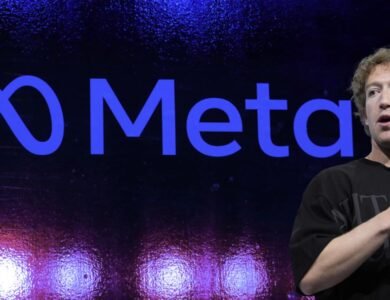
MiDashengLM-7B arrived as a 7-billion-parameter open-source solution that merged an audio encoder with a powerful autoregressive decoder. The system set 22 public benchmark records and cut first-token delay by 75% versus comparable systems.
The architecture paired the Dasheng audio encoder with Qwen2.5-Omni-7B, letting the model interpret speech and ambient sound in real time. It ran offline, used 77 public datasets for training, and was released under Apache 2.0 to let developers integrate it freely.
Early deployments appeared in smart TVs, IoT devices, and electric vehicles across China. That move showed production readiness and practical assistants that handle tasks like organizing shopping carts and changing in-car music.
For U.S. readers tracking global tech, the release highlighted performance, openness, and offline operation as key capabilities that could reshape expectations for voice assistants in home and vehicle environments.
Xiaomi announces next-generation AI voice model for cars and smart homes
MiDashengLM-7B is an open-source 7-billion-parameter release built to run on consumer devices and in-vehicle systems. The single solution pairs an audio encoder with a large decoder to interpret speech and ambient sounds in real time.
What was launched: MiDashengLM-7B open-source voice model for devices and vehicles
The launch put a production-ready assistant into smart TVs, IoT gear, and automotive platforms in China. It handles wake words, natural dialogues, and non-speech cues like claps or snaps to trigger actions.
Why it matters now: From smart homes to in-car assistants, voice controls go real-time
Low latency and offline operation mean faster responses for media, navigation, and home automations. Developers gain an Apache 2.0 license and transparent training data to build commercial applications with less friction.
For users, that translates to a more reliable voice assistant that scales across contexts while keeping hands free and attention focused on driving or daily tasks.
Under the hood: Dasheng audio encoder meets Alibaba Qwen2.5-Omni for record-setting performance
A tightly coupled stack links Dasheng’s audio encoder to Qwen2.5-Omni-7B, letting sound inputs drive fluent, low-latency responses.
Core architecture
The core design pairs the dasheng audio encoder with an autoregressive decoder from alibaba qwen2.5-omni. This encoder-decoder split shifts heavy context work to the decoder while keeping front-end capture efficient.
Multi-domain capabilities
One pipeline handles speech, environmental sounds, and music analysis thanks to universal audio description training. That reduces the need for separate models and improves robustness across rooms, mics, and background noises.
Performance and edge strategy
Benchmarks show 22 public records and a 75% cut in first-token delay. The system supports 20× more concurrency without extra memory, enabling snappier interactions at scale.
An edge-first approach lets the assistant run offline to lower cloud costs, improve privacy, and offer hybrid deployments where sensitive processing stays on-device.
The release used 77 public datasets and an Apache 2.0 license, offering clear documentation so developers can validate claims and adopt the open-source voice stack with confidence.
From living rooms to dashboards: real-world applications and voice assistant use cases
Across living rooms and dashboards, the platform powers practical assistants that respond to everyday sounds and gestures. It moves beyond simple voice commands to monitor, react, and help in real time.
Smart home controls and safety
The assistant continuously listens for abnormal sounds like glass breaks, smoke alarms, or unexpected bangs. When it detects an anomaly, the system can send an alert or trigger connected controls to improve safety at home.
Vehicle integrations
In cars, the system enables hands-free media controls, navigation shortcuts, and task automation without distracting drivers. Low-latency audio processing keeps responses quick, helping maintain focus on the road.
Gesture and ambient interactions
Clap and snap detection offer quick, touchless controls in rooms where screens or buttons are inconvenient. Security features such as external defense modes and YU7 sentry help spot and escalate unusual patterns.
Unique capabilities and scale
Features include underwater wake-up for wet environments and pronunciation feedback for language practice. The unified voice model runs offline across smart home products, TVs, and EVs, protecting privacy while reducing cloud costs.
What this move signals for open-source voice models, users, and developers
This move signals growing momentum behind open-source voice stacks that aim to match commercial performance while staying transparent.
With an Apache 2.0 license and training on 77 public datasets, the release lowers friction for developers. Teams can prototype, redistribute, and integrate without complex terms.
An edge-first design cuts recurring cloud costs and trims latency. Enterprises gain predictable performance and lower total cost of ownership for products that must work offline or in limited connectivity.
Coupling dasheng audio encoder work with an alibaba qwen2.5-omni backbone shows a practical strategy: combine differentiated audio research with open research progress. Users get faster, context-aware assistants that handle a wider range of sounds and use cases.



